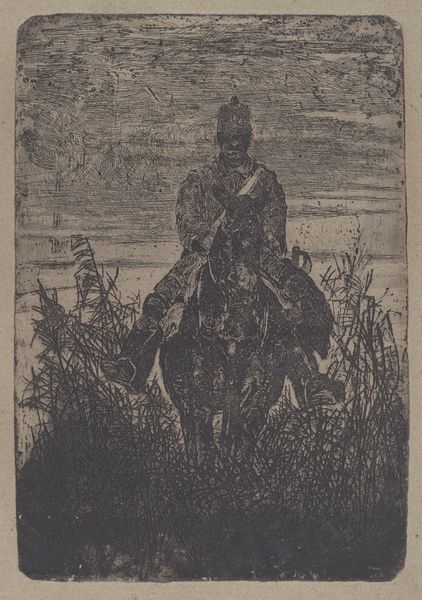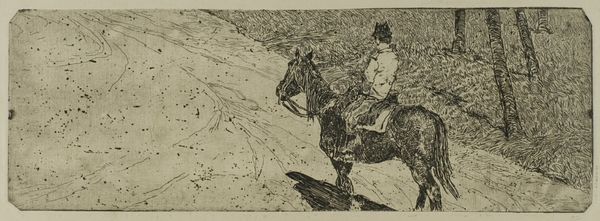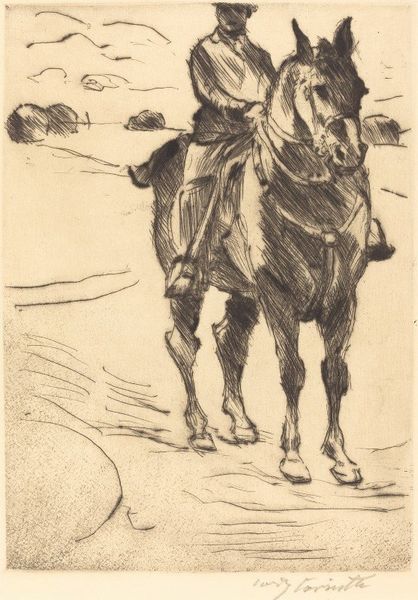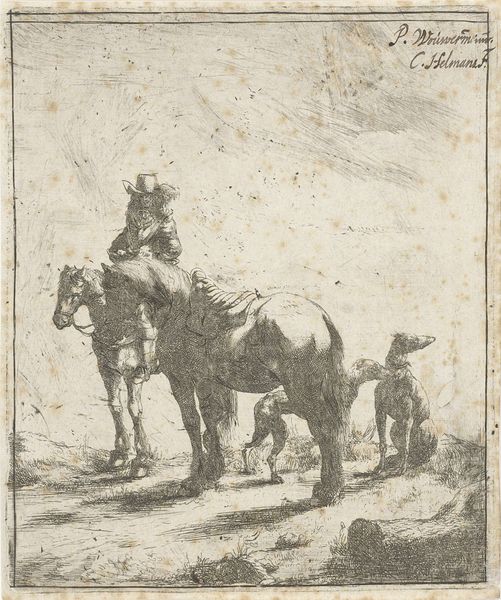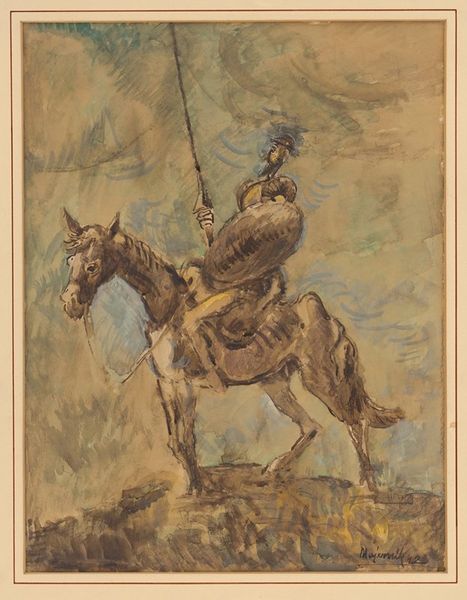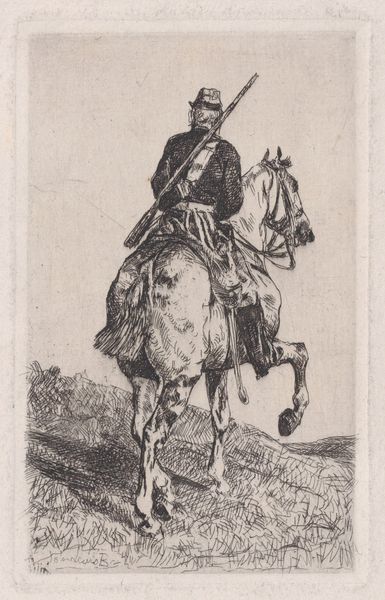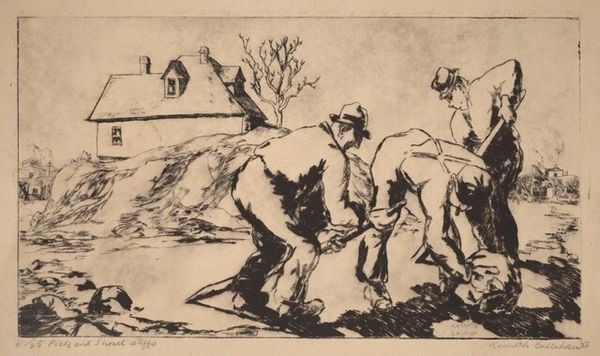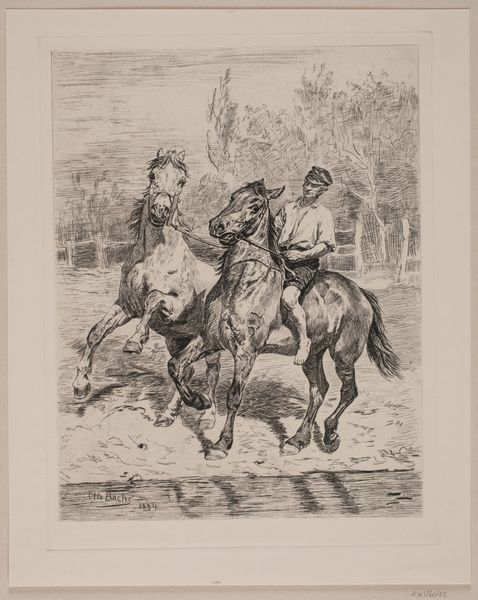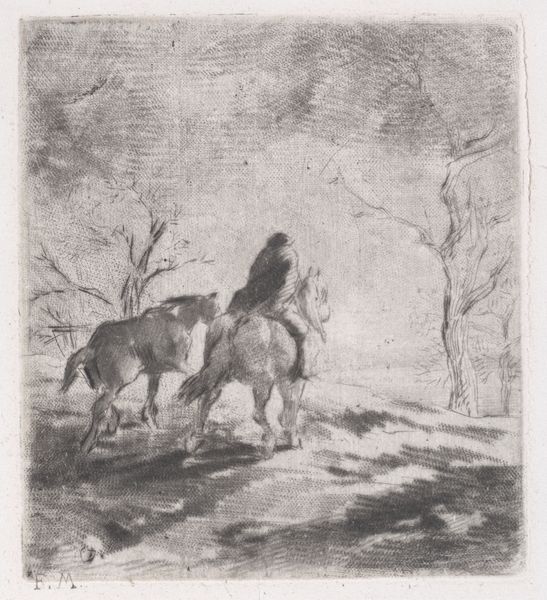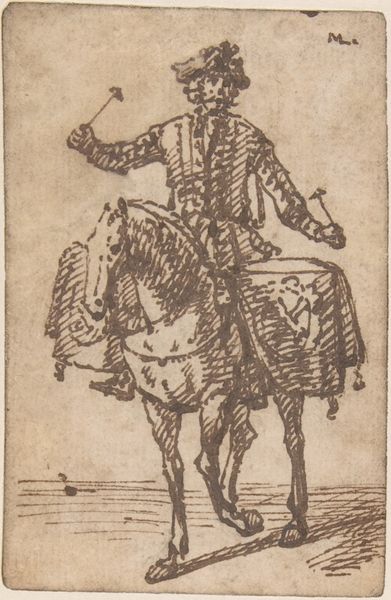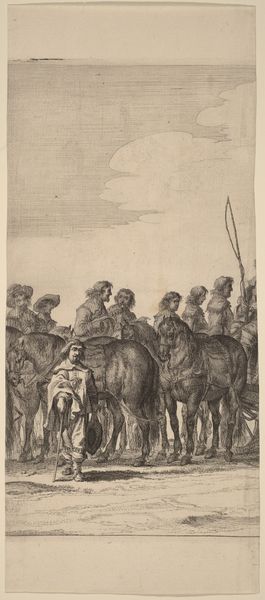
Artillery Soldier on Horseback (Soldato di artiglieria a cavallo) 1888 - 1890
0:00
0:00
print, etching
# print
#
etching
#
landscape
#
genre-painting
#
history-painting
#
italian-renaissance
Dimensions: plate: 17.6 × 8.2 cm (6 15/16 × 3 1/4 in.) sheet: 39.6 × 28 cm (15 9/16 × 11 in.)
Copyright: National Gallery of Art: CC0 1.0
Curator: Giovanni Fattori created this etching, titled "Artillery Soldier on Horseback," sometime between 1888 and 1890. Editor: The first thing that strikes me is the density of the marks and the contrasts! It creates an ominous, brooding sort of mood despite the small scale. All that heavy black ink makes it feel rather weighty and grave. Curator: Indeed. This piece encapsulates a moment in Italian history, during the period following the Risorgimento, the unification, when national identity was being shaped, often through military displays and genre painting. The soldier becomes a symbol here, representing the ideal Italian citizen. But, who is the subject in the imagery? The solitary subject and the somewhat vague scene could make it be argued otherwise. Editor: It’s true; there's definitely an element of melancholy at play. To me, this recalls classic representations of the rider figure – a figure prevalent across cultures, symbolizing power and journey, both physical and spiritual. He faces away; it's about where he's going not where he is. We are meant to reflect on the journey ahead and what lies over the horizon, more so that about the rider himself. Curator: Precisely, though understanding the post-Risorgimento moment lends a socio-political reading, the iconography taps into broader narratives about nation-building, even colonialism, and how the individual is both subsumed and exalted within that. There is no specific identifier to pinpoint exactly what journey it is for us now in a modern context, but it carries emotional resonance still, with its rich interplay of symbolism. We read the emotional toll by analyzing the physical composition. The steep cliff to what appears to be an endless horizon is meant to draw a reaction from its viewers. Editor: And perhaps that's why the landscape, rendered so starkly, plays such a pivotal role. It becomes a metaphor itself for uncertainty. If the figure were surrounded by people would the weight still be the same? Curator: Certainly, and viewed through today’s lens, the etching speaks to anxieties around nationalism. Editor: In all, it reminds us how deeply visual symbols embed themselves within our collective consciousness. Curator: A fitting reflection. Considering the intersectional nature of this art provides critical insight on nationalism, its effect on individuals, and how artists have portrayed the issue.
Comments
No comments
Be the first to comment and join the conversation on the ultimate creative platform.
